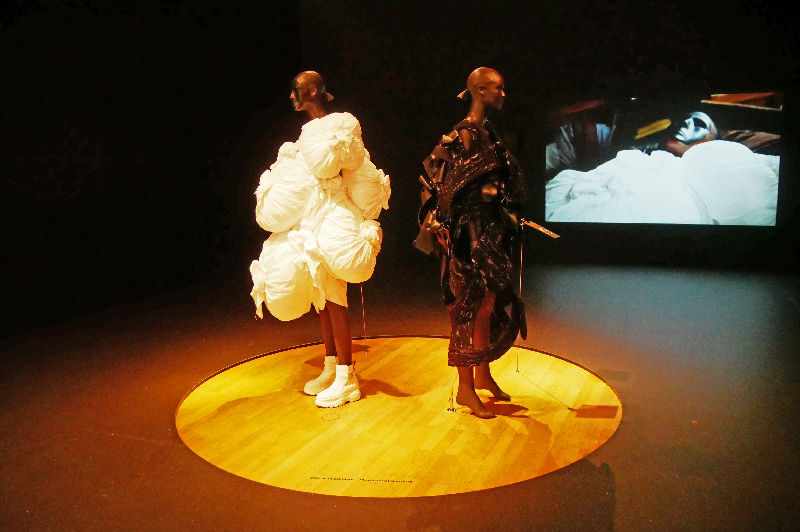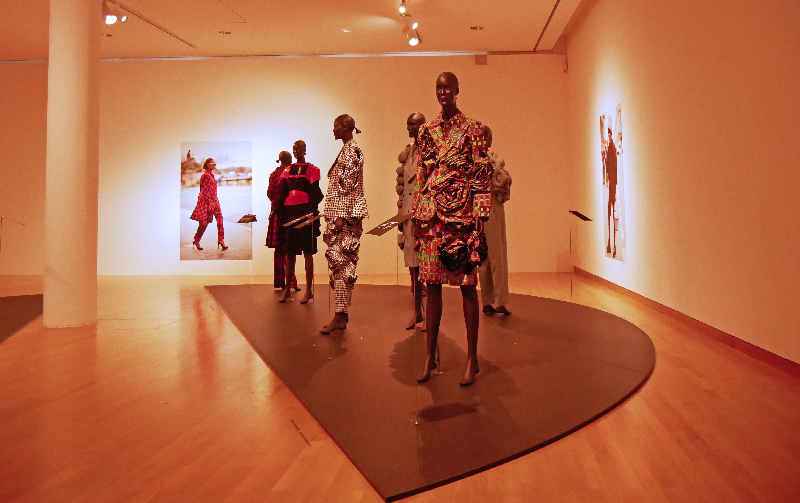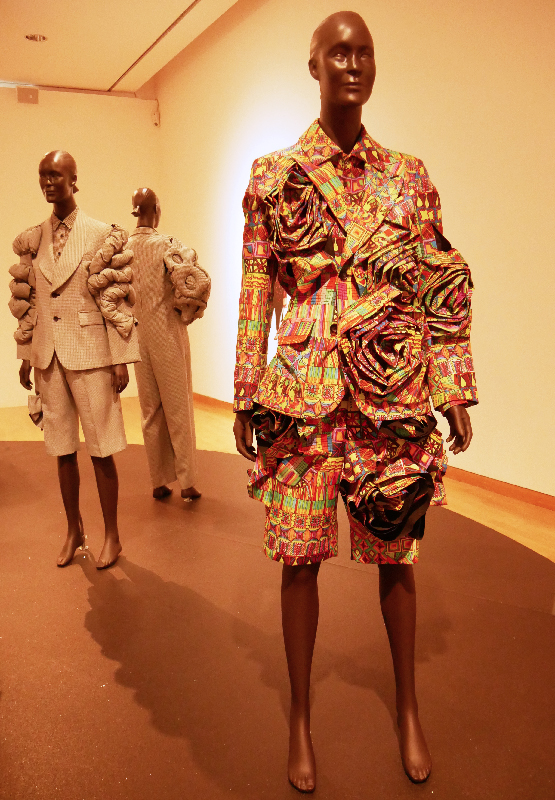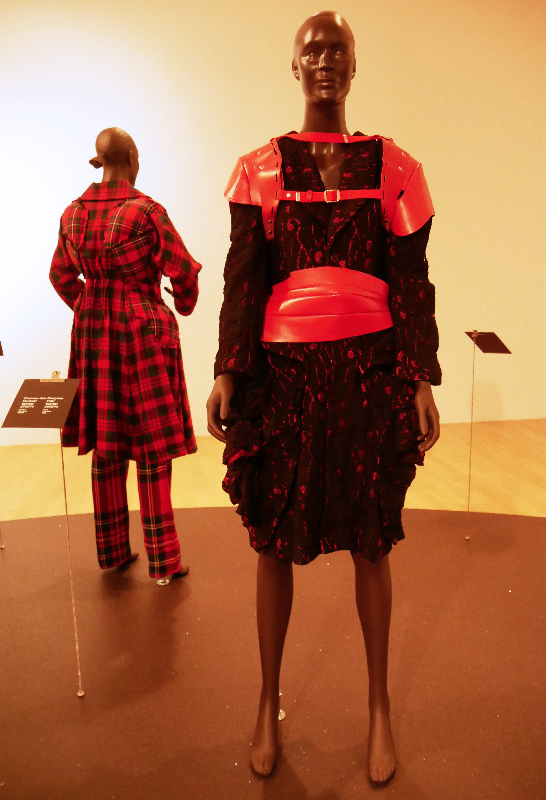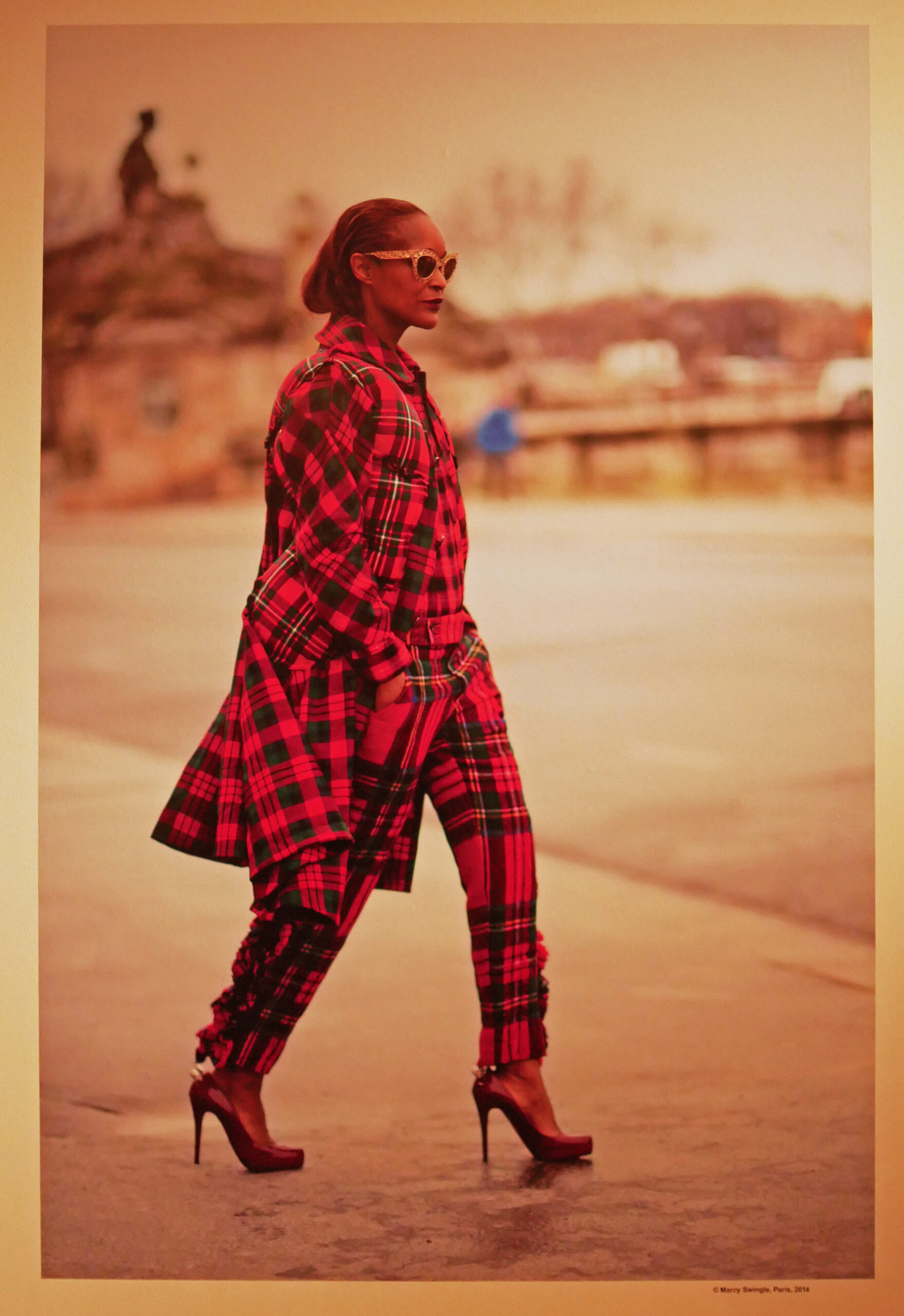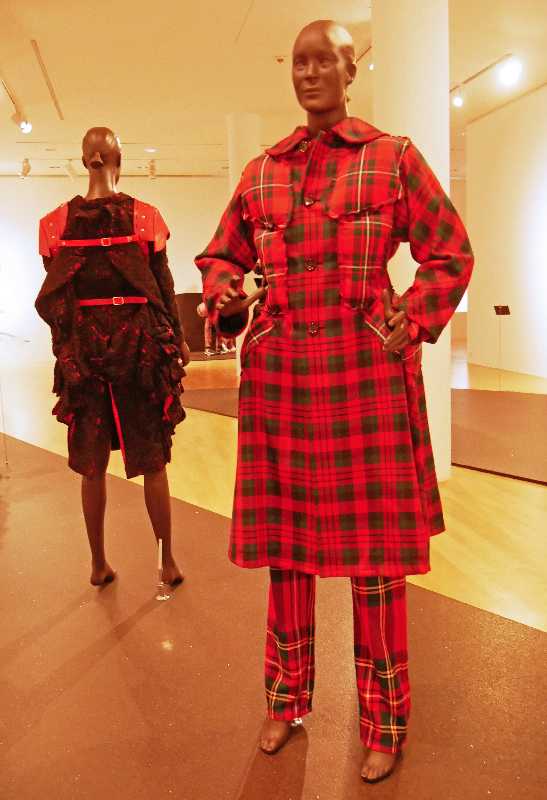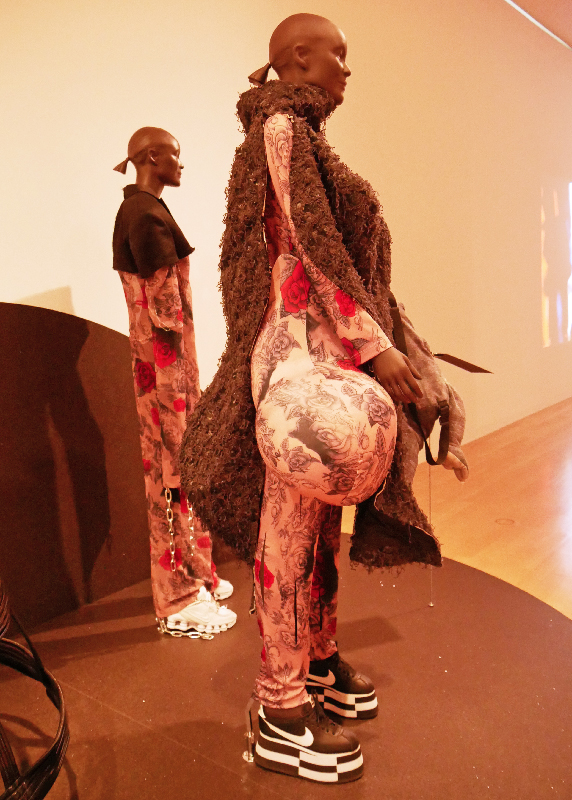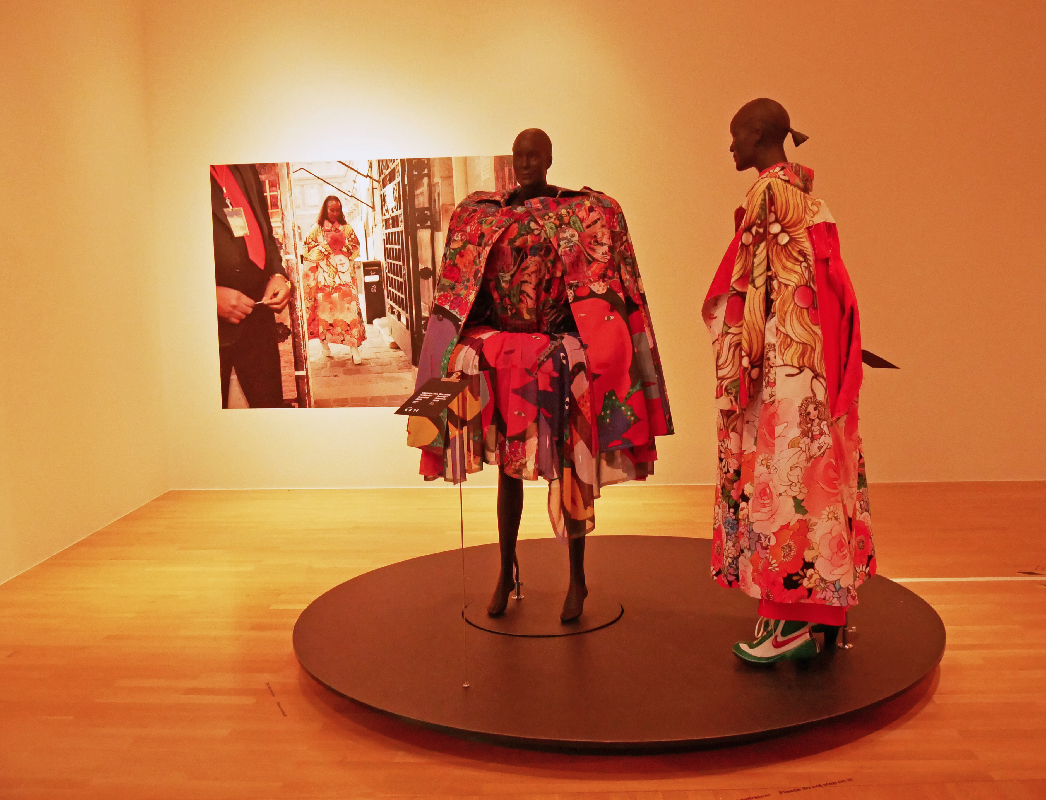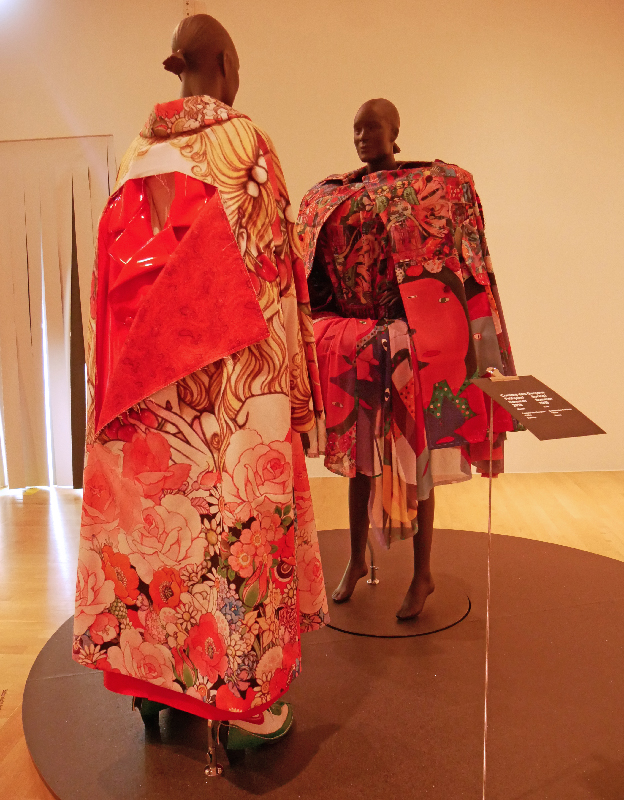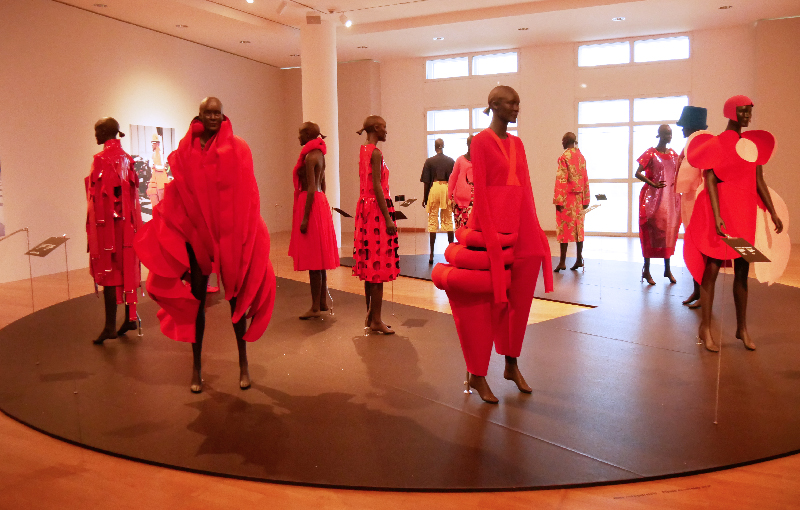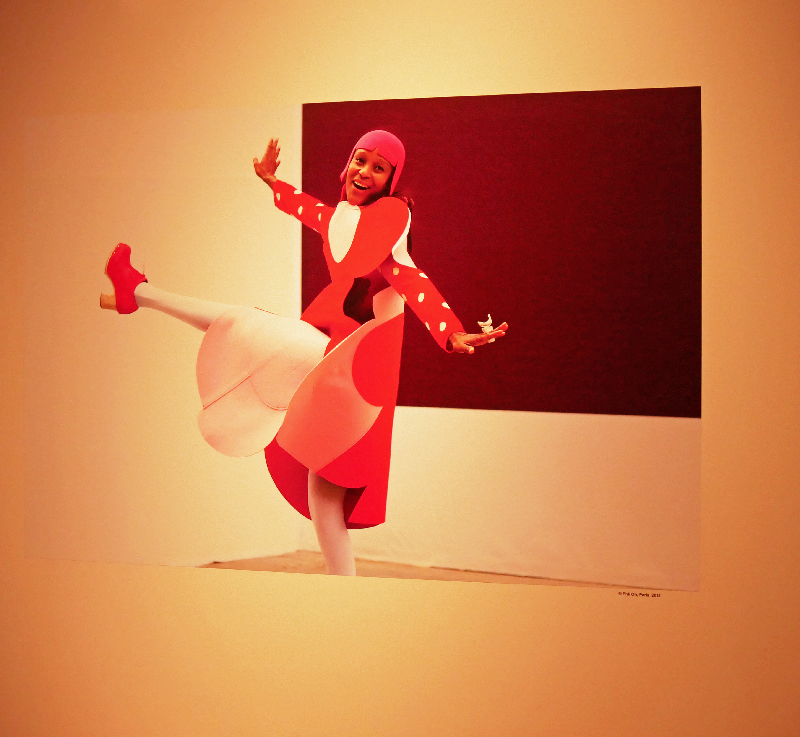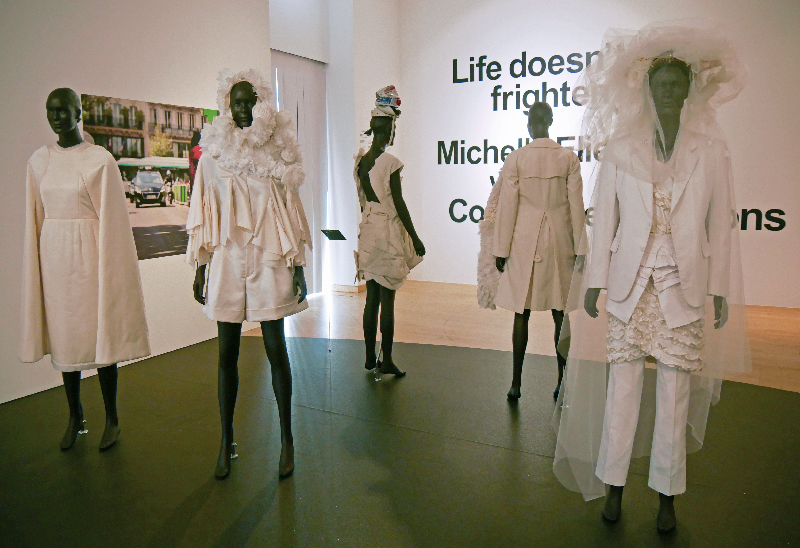
Life doesn’t frighten me – Michelle Elie wears Comme des Garçons , 3 April – 1 November 2020 at the Frankfurt Museum of Applied Art
My first exhibition visit in Frankfurt, end of June, after the Corona lockdown, meant a lot to me. Such a pleasure to be able to see an exhibition again! Although I did not know what to expect of this fashion exhibition it has been a positive surprise. I was aware that Rei Kawabuko, who founded Comme les Garçons, breaks with all conventions. But that there are woman like Michelle Elie (Haitian-born) who dare to wear her provocations and become collectioner of many pieces was completely new to me. I admire her courage to keep up with the various reactions the pieces provoke and was a little ashamed to see that my own self-confidence in bodily awareness is rather modest. Michelle Elie says about her fascination with Comme les Garçons: “Rei Kawabuko allows me to express myself in different ways. She keeps challenging me and has changed my perspective of clothing. What is clothing? What can clothes actually do?… These are questions I ask myself all the time.”
Curator Dr. Mahret Ifeoma Kupka stated:
“Clothing becomes fashion through cultural context. The Japanese designer Rei Kawakubo founded her fashion label Commes des Garçons in 1969 in a strictly patriarchal Japan. To this day, her aim is not to please, but to playfully and lustfully disturb the male gaze guided by Western ideals of beauty. Kawakubo breaks the conventions of fashion design by deconstructing, shifting, destroying, and bulging forms without regard towards the body’s silhouette. Her wearers appropriate the clothing, bring them to life in their own contexts, not without causing a stir. CdG contradicts the norm, stands out and often provokes.
Designer and fashion icon Michelle Elie loves, collects and lives Kawakubo’s designs passionately – at the international fashion weeks she regularly visits and in her everyday life in Cologne. The Museum Angewandte Kunst shows Elie’s collection and lets her tell the stories behind the pieces herself: From the moment of discovery, to the acquisition, to the experience on her own body and the various reactions that wearing them provokes in others. “Life doesn’t frighten me,” says the Haitian-born artist, and in fact it takes a little courage to wear Kawakubo and thus clearly position oneself against social norms. As a black woman in a white majority society of Europe with her corresponding notions of beauty, Elie’s sheer existence bursts all norms. With CdG on her body, she self-confidently exaggerates her body experiences and thus challenges viewers to reflect on their own body experiences.”
Published by Beatrijs Sterk
